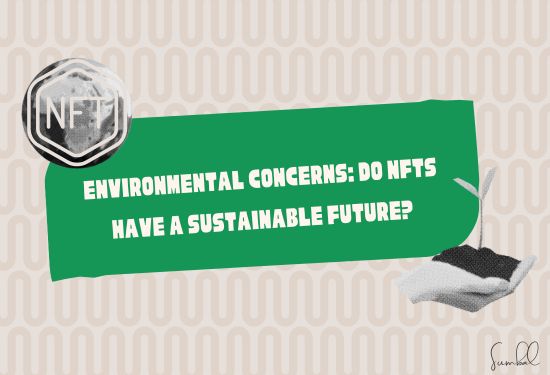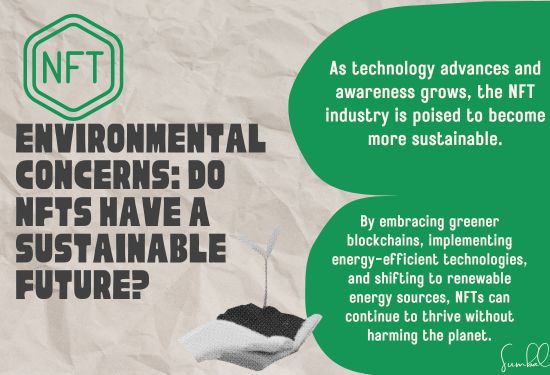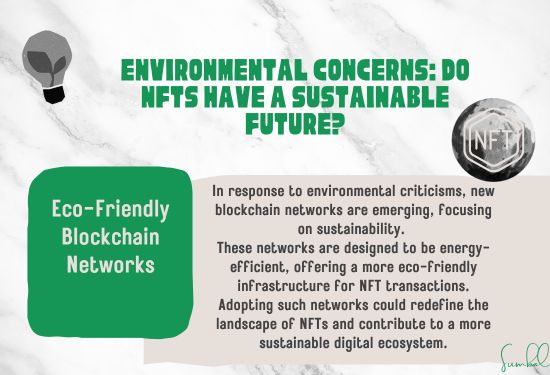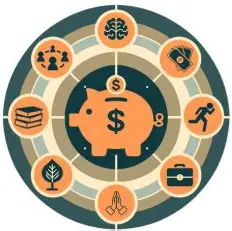Non-fungible tokens, (NFTs) have continued to grow in a very fast speed. It has impacted the art, gaming, and even ownership sectors. These digital assets include artworks and virtual residential and commercial properties bought, sold or traded by the use of blockchain technology. However, with the growth of NFT, people have started to question the ecological impact of it. Many such concerns have been raised regarding the sustainability of the current processes involved in conducting NFT transactions.

The Environmental Impact
Most NFTs are made by the help of blockchains like Ethereum. It involve the use of proof-of-work (PoW) consensus process, which is computationally heavy. This mechanism needs high-power computers in order to complete highly involved mathematical series, and uses plenty of energy.
- Energy Usage: Just one trade of an NFT can take as much electricity as a household or even more depending on the blockchain.
- Carbon Footprint: This results into large carbon emissions mostly from developing nations whose energy production relies mainly on the use of fossil energy.
Several artists and environmental activist groups have come forward to criticize NFTs. Criticism is raised on the environmentally hazardous nature of NFT for more sustainable and environment friendly options.
Steps Toward Sustainability in the NFT Industry
However, currently, the NFT market faces multiple environmental issues; but is trying to focus on reducing its negative impact.
- Switch to Proof-of-Stake (PoS) Protocols
Recently, Ethereum 2.0, the biggest blockchain where NFTs are exchanged, switched to proof-of-stake (PoS). This change reduces greatly the energy requirement or transaction energy by removing the need for computational energy. There are other blockchains such as Tezos, Solana, and Flow, that are also based on the energy-efficient PoS systems. They are often used by planet-friendly developers. - Carbon Offset Initiatives
Certain marketplaces for NFTs, also some artists selling non-fungible tokens, are engaging in carbon offsets to balance the environmental impact of their activity. Also, they want to balance the environment by investing in renewable sources of power to underlying digital art or reforestation. - Layer-2 Scaling Solutions
Organizations such as Polygon and Immutable X provide layer solutions for Ethereum that will enable the platform to transact faster and use less energy. These solutions significantly decrease the energy consumption demanded by NFTs. - Eco-Friendly Blockchains
Newer generations of blockchains that are much more focused on sustainability are now coming into existence. Current examples are Algorand and Cardano that actively encourage the usage of low-energy driving consensus mechanisms, which are perfect for NFTs and their impact on the environment.

Consumer and Creator Responsibility
The need of transition for sustainability in NFT is not because of technology but the behavior of of creators and consumers.
- Informed Choices: It also provides a chance to creators to select more sustainable environments for minting and selling their NFTs, and consumers to put their money on environmentally sound artists or projects.
- Reducing Minting and Transactions: Restrictions applied to the generation of unnecessary NFTs and the combination of several transactions can lead to energy conservation.
The Future of Sustainable NFTs
However, the NFT market is at a turning point, with growing concerns over its impact on the environment. Finally, with the advent of technology and raising awareness, the way to sustainability appears more or less feasible. Toward’s PoS blockchains, carbon-neutral processes, and energy efficiency initiatives indicate that the future is green for NFTs.






